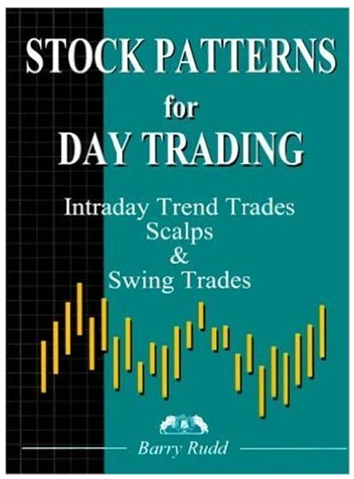Barry Rudd – Stock Patterns for Day Trading
Price: $25
Please contact us: – Email: Tradersoffer@gmail -Skype: [email protected]
VIDEO I
Introduction to electronic direct access trading for stock day traders
Overview of Investing, Swing Trading, and Day Trading
The NYSE – structure of an “auction” market
NYSE order routing with SuperDOT
Role of the Specialist
The structure of the NASDAQ market
NASDAQ order routing
Understanding ECNs (Electronic Communications Networks)
Role of the Market Makers
Basic terminology
Understanding the Level II quote window
Components of the basic screen layout for your computer
What are price bar charts?
The daily bar chart
The 5 minute intraday bar chart
Understanding how to use the stock ticker
Order entry and management windows
Tracking the market indices
Using candlestick charts
Summary
Level II quote screen tutorial
VIDEO II
Introduction to methodology section of course (for tapes 2 – 6)
Why use price bar charts to day trade?
Scalping vs. intraday trend trading – overview
Find a trading style that fits your personality
Know your exit price before you enter a trade
The “Wiggle” – a detailed explanation
How to determine the current wiggle for each stock you trade
Generating a computer screen layout for your trading
Navigating your tickers, charts, stock box and time and sales windows
Interpreting your tickers
Which indices to follow and why
Utilizing the “new high, new low” ticker
5 minute bar chart patterns
Consolidation breakout pattern – the dynamics
Timing your entry with the Level II & time and sales to get the best entry price
Spotting breakout patterns in advance
Using another Level II window as a “launching pad” for trade entry
VIDEO III
What constitutes consolidation – the 3 main criteria
Tying the bar chart price to the Level II quote screen
Interpreting the time and sales “prints” in relation to Level II quote movement as a way to uncover buying or selling pressure
The Bull’s Horn pattern on the 5 minute chart
Listening to the market and reacting – don’t force a trade
Intraday wedge pattern
Using the prior day’s intraday chart to enhance consolidation breakout trades
Support and Resistance on micro and daily time frames – a visual indicator of potential halting points
“Shotgun” pattern on the 5 minute bar chart with ensuing volume influx
“L” pattern on the 5 minute bar chart
Morning “Flashback” or headfake pattern
Computer screen examples of 5 minute bar chart patterns
Wide Range Day with Extreme Close – daily bar chart setup
Wide Range Day with slight gap outside, slight gap inside, the opening even with prior day’s close, and the big gap open
Trading off micro support and resistance zones on wide range days
Large price gap plays on the daily bar chart
VIDEO IV
More on large gap openings on the daily bar chart
Computer screen examples of wide range day setups
Reversal setups on the daily bar chart
Intraday (5 minute bar chart) dynamics of the Reversal setup
Where to enter and exit a reversal trade
Scanning your daily charts to create a hit-list for the next trading session
The alternative entry to the intraday consolidation breakout
The dangers of “randomly” picking tops and bottoms of price swings intraday
Variation on the initial wiggle to better minimize losses on a losing trade
Daily congestion breakout plays – more stocks for the morning hit-list
Computer screen examples of the Reversal setup
Profit Targets – likely halting points to exit a trade:
Daily price support and resistance
Retracement of a Wide Range Day
Reversal setup profit target
50 & 200 day simple moving averages
The closing of a price gap on the daily chart
Price spike on intraday chart
Significant reversal in direction of market indices intraday
Filters – filtering out the best potential day trades
Too near a profit target
Beware of trading a stock during daily congestion
The cyclical nature of a stock’s “trader friendly” mode
Significance of the typical daily range of a stock
Computer screen examples of profit targets and filters
Summary – tying together all the trading analysis
Trade checklist – 14 step flowchart process for evaluating, trading and managing high probability trades
VIDEO V
Fading (counter trend trading) techniques – not randomly picking tops and bottoms, but using specific criteria instead
Profit target reactions
“Tagging”
“Big Stack and a Rainbow”
NASDAQ Level II quote screen – a fuller understanding
Using 4 key factors to gauge the risk of a stock
The bid/ask spread
Number of Market Makers and ECNs per price level
Number of shares posted by each Market Maker and ECN
The price difference between each “price level”
How a Market Maker can act as the “ax” or “hammer” in a stock
Relative Strength – daily and intraday – one of the most important factors in your trading decisions
Market Indices – the trend vs. the immediate direction on the 5 minute chart
Micro support and resistance on the indices
Typical market index behavior – morning move, mid-day, and afternoon move
VIDEO VI
Computer screen index examples of relative strength
Time of day – finding the best times to trade (and the ones to avoid)
What stocks to trade – how to choose your basket of stocks
Trade analysis – trading as a business
Managing your trading vs. just managing a trade
Money management – a three step approach to help minimize risk and lock in profits
IPOs and news trades
Scalping profitably – beware the pitfalls
The art of trading
Some footage of “live trading”
SIZE: 3.4 GB

